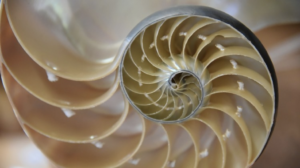This post was written by Julia Lyon ’18
On a day in April, The Sustainable Innovation MBA students started a particular morning considering the question: What is your favorite organism? With answers ranging from sea turtles to willow trees, to ants and fungus, we began to explore the organisms in nature that intrigue and inspire us.
 Mike Dupee, Lecturer in The Sustainable Innovation MBA program and a Certified Biomimicry Professional, introduced us to biomimicry, which is the innovation approach centered on the “conscious emulation of nature’s genius.” As humans strive towards innovation – doing things faster, better, more creatively, and at lower cost – looking more closely at the natural world around us shows that this is one of the oldest processes on the planet. The plants, animals, and microbes that have survived the 3.8 billion years of our planet are the ultimate innovators and as businesses seek to solve problems and develop new strategies, there is much that can be learned from them.
Mike Dupee, Lecturer in The Sustainable Innovation MBA program and a Certified Biomimicry Professional, introduced us to biomimicry, which is the innovation approach centered on the “conscious emulation of nature’s genius.” As humans strive towards innovation – doing things faster, better, more creatively, and at lower cost – looking more closely at the natural world around us shows that this is one of the oldest processes on the planet. The plants, animals, and microbes that have survived the 3.8 billion years of our planet are the ultimate innovators and as businesses seek to solve problems and develop new strategies, there is much that can be learned from them.
“There are three core concepts of biomimicry: Emulate, Reconnect, and Ethos.”
There are three core concepts of biomimicry: Emulate, Reconnect, and Ethos. Emulation means that biomimicry is centered on learning from nature, not just copying it. Nature’s design can be learned from and adapted, and biomimicry is not simply using an exact design copy as found in nature. Reconnecting is based on the notion that biomimicry in practice will be better if you have a connection with nature and a relationship with the environment. Ethos asks the simple question: what kind of work is worth doing? This is our respect for the environment and the responsibility to our fellow species. Biomimicry in practice also centers on six central life principles that are lessons from nature based on design. These range from being resource efficient to adapting to changing conditions.
There are many fascinating examples of how businesses have used biomimicry to create innovative designs. One such example is Sharket Technologies, which was created when the U.S. Navy was in search of a solution to prevent aquatic life from attaching to ship hulls; the only solution that had been found thus far was a toxic paint. It was realized, however, that sharks do not have the same problem of organisms attaching to their skin and researchers took a closer look at sharkskin under a microscope. It was found that the shape and pattern of sharkskin made it resistant to algae and barnacles attaching themselves. This insight was developed into a special material that has been used to create a commercial coating for boats as well as sterile surfaces for hospitals and laboratories that reduce bacteria growth.
During the workshop, student groups were given different organisms with innovative features to examine and design potential commercial uses. With organisms like the nautilus, red pine, and the abalone, and students designed eco-friendly adhesives for snowboard manufacturing, fire-retardant clothing, and sturdier bike helmets.
Though biomimicry is not a new concept, its approach can be applied to help solve sustainability challenges and improve life on our planet for generations to come.
